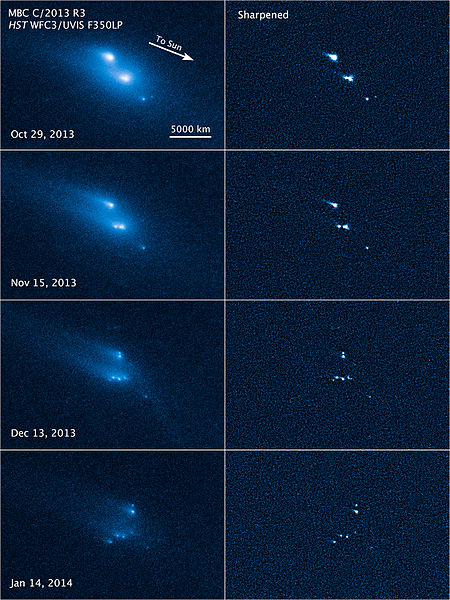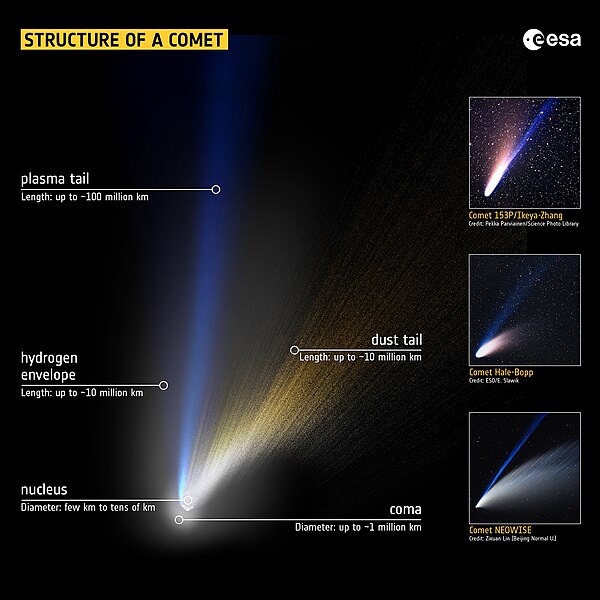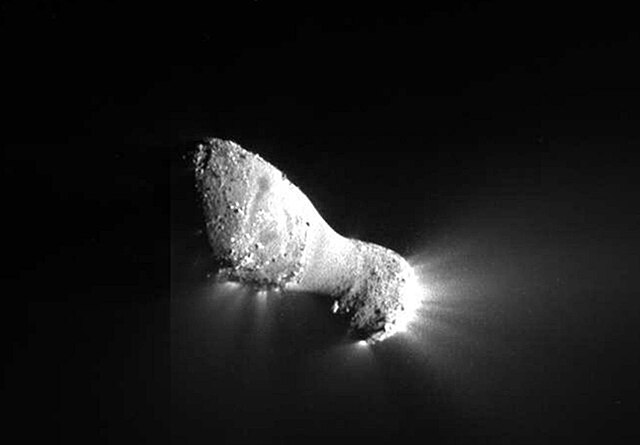Active asteroids are small Solar System bodies that have asteroid-like orbits but show comet-like visual characteristics. That is, they show a coma, tail, or other visual evidence of mass-loss, but their orbits remain within Jupiter's orbit. These bodies were originally designated main-belt comets (MBCs) in 2006 by astronomers David Jewitt and Henry Hsieh, but this name implies they are necessarily icy in composition like a comet and that they only exist within the main-belt, whereas the growing population of active asteroids shows that this is not always the case.
Asteroid 596 Scheila displaying a comet-like appearance on 12 December 2010
Dust ejecta and tail from the aftermath of the Double Asteroid Redirection Test's impact on the asteroid moon Dimorphos, as seen by the Southern Astrophysical Research Telescope in 2022
Disintegration of asteroid P/2013 R3 observed by the Hubble Space Telescope (6 March 2014).
Asteroid 101955 Bennu seen ejecting particles on January 6, 2019, in images taken by the OSIRIS-REx spacecraft
A comet is an icy, small Solar System body that warms and begins to release gases when passing close to the Sun, a process called outgassing. This produces an extended, gravitationally unbound atmosphere or coma surrounding the nucleus, and sometimes a tail of gas and dust gas blown out from the coma. These phenomena are due to the effects of solar radiation and the outstreaming solar wind plasma acting upon the nucleus of the comet. Comet nuclei range from a few hundred meters to tens of kilometers across and are composed of loose collections of ice, dust, and small rocky particles. The coma may be up to 15 times Earth's diameter, while the tail may stretch beyond one astronomical unit. If sufficiently close and bright, a comet may be seen from Earth without the aid of a telescope and can subtend an arc of up to 30° across the sky. Comets have been observed and recorded since ancient times by many cultures and religions.
Comet Hale-Bopp
Structure of a comet
Nucleus of 103P/Hartley as imaged during a spacecraft flyby. The nucleus is about 2 km in length.
Comet 81P/Wild exhibits jets on light side and dark side, stark relief, and is dry.








